Qualcomm has unveiled the Snapdragon X octa-core Arm SoC at CES 2025 designed for mainstream AI PCs with Copilot+, which should start at $600 and up. This follows the announcements of the high-end 4.3GHz Snapdragon X Elite 12-core SoC in 2023, and the Snapdragon X Plus 10-/8-core processors last year, and should make AI PCs affordable to a wider range of consumers.
The new Snapdragon X is clocked at up to 3.0 GHz, still features a 45 TOPS Hexagon NPU, supports NVMe storage, up to 64GB LPDDR5, up to 2560 x 1440 built-in displays, up to three external displays at 4Kp60, and a single camera up to 36MP resolution. Systems based on the new octa-core processor can support WiFi 7, WiFi 6E, and/or 5G LTE connectivity.
Qualcomm Snapdragon X (X1-26-100) specifications:
- CPU – Octa-core 64-bit Armv8 Oryon processor clocked at up to 3.0 GHz (2976 MHz) with 30MB cache
- GPU – Adreno GPU up to 1.7 TFLOPS
- NPUs
- Hexagon NPU with up to 45 TOPS
- Dual micro NPU on the Qualcomm Sensing Hub
- VPU – Adreno VPU
- Encode – 4K 30 FPS 8-bit encode H.264, HEVC (H.265), AV1
- Decode
- 4K 30 FPS 10-bit decode HEVC (H.265), VP9, AV1
- 4K 60 FPS 8-bit decode H.265, HEVC (H.265)
- Concurrency
- 4K 30 FPS 8-bit decode + 1080p 30 FPS encode
- 1080p60 10-bit decode + 1080p 30 FPS encode
- Memory – Up to 64GB 8-channel LPDDR5x with 135 GB/s bandwidth, 8448MT/s transfer rate
- Storage
- NVMe SSD over PCIe Gen 4
- SD v3.0
- Display Interfaces
- eDP v1.4b up to QHD+120 Hz (2560 x 1440) with HDR10
- DP v1.4 for up to 3x displays with to 4Kp60 resolutions with HDR10, or 2x displays up to 5Kp60 or 4Kp120
- Camera
- Qualcomm Spectra ISP
- Single camera up to 36 MP
- Video capture up to 4K HDR
- Audio – Qualcomm Aqstic audio, Qualcomm aptX audio
- Wireless connectivity using external chips
- FastConnect 7800
- Tri-band WiFi 7, WiFi 6E, WiFi 6 with up to 4x spatial streams
- Bluetooth 5.4
- Implemented through a WiFi M.2 card over PCIe Gen 3 (TBC)
- Snapdragon X65 5G modem-RF system
- Supported features – 5G NR, mmWave, sub-6 GHz, Dynamic Spectrum Sharing (DSS), LTE, CBRS, HSPA, WCDMA
- Peak speeds – Download: 10 Gbps; upload: 3.5 Gbps
- 1,000 MHz bandwidth (mmWave), 300 MHz bandwidth (sub-6 GHz)
- Technologies – Qualcomm Smart Transmit technology, Qualcomm Wideband Envelope Tracking, Qualcomm AI-Enhanced Signal Boost adaptive antenna tuning, Qualcomm 5G PowerSave
- Implemented through a 5G M.2. card over PCIe Gen 3 (TBC)
- FastConnect 7800
- USB – 3x USB4 (40Gbps), 2x USB 3.2 Gen 2, and 1x eUSB2 (Embedded USB 2.0)
- Process – 4nm
Video decode is limited to 4K 30FPS with AV1 and VP9 often used in YouTube, so 4K YouTube videos at higher framerates may not play smoothly, or rely on software decode with higher power consumption. The NPU and Copilot+ support will enable features like live translation, Cocreator, Windows Studio Effects Animate/Portrait Light, Generative Fill/Erase in Photos, Super Resolution, and the controversial Recall feature.
Qualcomm also shared some benchmark results comparing the Snapdragon X to an Intel Core 5 120U (Raptors Lake – 10 cores: 2P+2E) but not raw numbers, and instead power-adjusted numbers since they look much better from a marketing point-of-view and highlight the low power consumption of the Arm SoC.
For example, in GeekBench 6, the single-core performance of the Snapdragon X is 163% faster than the Intel processor at iso-power, and the multi-core 157% faster. The test procedure is indicated at the bottom of the slide in small characters:
CPU Performance is based on Geekbench v6.2 Single-Core and Multo-Core on Windows 11 OS run in November 2024. Snapdragon X(X1-26-100) was tested using a Qualcomm reference design on Windows 11 OS. The Intel Core 5 120U was tested using an Dell Inspiron 14 (7440 2-in-11) laptop on Windows 11. Both platforms’ Single-Core iso-power performance measured at 6.1W INPP (Idle-Nornalized Platform Power). Intel Core 5 120U Single-Core iso-power performance measured at 16.5W INPP. Both platforms’ Multi-Core iso-power performance measured at 14.5W INPP (Idle-Nornalized Platform Power). Intel Core 5 120U Single-Core iso-power performance measured at 49.3W INPP. Power and performance comparison reflects results based on measurements and hardware instrumentation of given devices.
I’m not sure the relation is linear, but a quick back of envelop calculation implies the (raw) single-core performance of the Qualcomm processor is almost the same as the Intel Core 5 120U. However, the multi-core performance is quite lower than on the Intel platform bearing in mind the latter draws over three times more power.
The performance per Watt gap is even wider for the GPU with 319% faster performance at iso-power when running 3DMark Wildlife Extreme. Note the Intel Core 5 120U relies on Intel Graphics, but we’ve seen the new Intel Arc GPUs consume much less power in our review of the Khadas Mind Maker Kit based on Intel Core Ultra 7 258V SoC with Intel Arc 140V GPU, so the performance per Watt delta will not be as great compared to new generation CPUs.
Performance per Watt also looks good in Speedometer 3.0 with Chrome, and Procyon Productivity Score. Qualcomm also highlights the Snapdragon X processors also perform better than AMD and Intel on batteries since the performance stays the same on the Arm CPU, while it drops on x86 platforms when the power supply is disconnected.
Qualcomm did provide raw numbers for the NPU performance using Procyon AI Score with the Snapdragon X 3.7 faster than an Intel Core Ultra 7 155U SoC.
While Qualcomm highlights Windows 11 and Copilot+ support, the Snapdragon X Elite does support Debian with mainline Linux support (at least partially, not sure about the status as of January 2025), so I’d expect the lower-end Snapdragon X to be Linux-compatible too.
We should not wait too long before launch, as Qualcomm says “devices powered by Snapdragon X are expected to be available from leading OEMs including Acer, Asus, Dell Technologies, HP and Lenovo in early 2025 enabling Copilot+ PCs in the $600 range”. More details may be found on the product page and in the announcement.

Jean-Luc started CNX Software in 2010 as a part-time endeavor, before quitting his job as a software engineering manager, and starting to write daily news, and reviews full time later in 2011.
Support CNX Software! Donate via cryptocurrencies, become a Patron on Patreon, or purchase goods on Amazon or Aliexpress


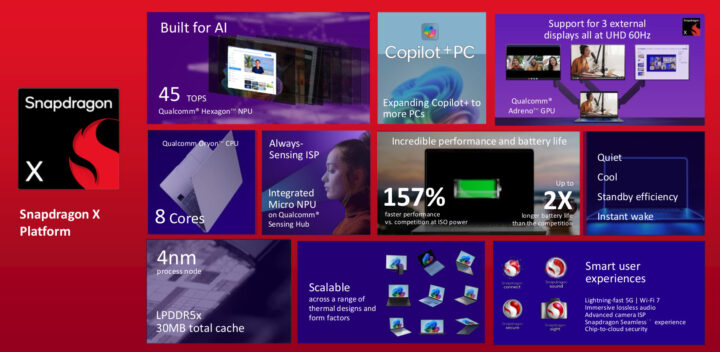
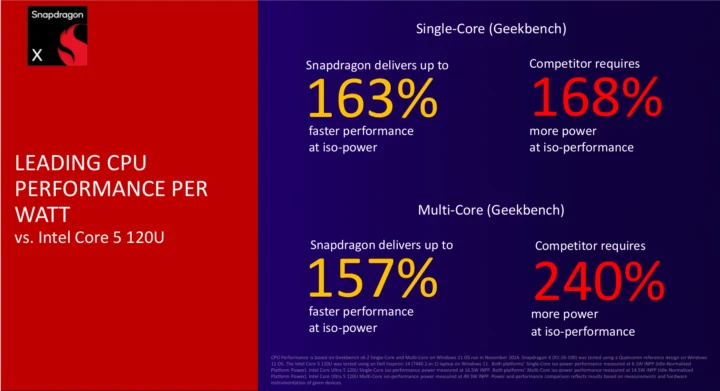
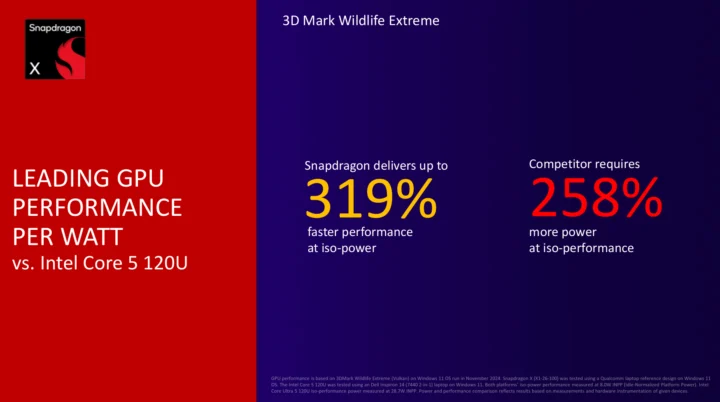
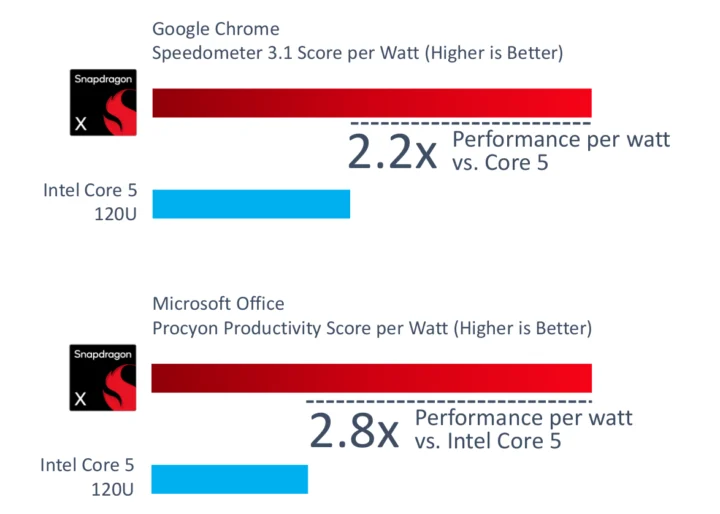
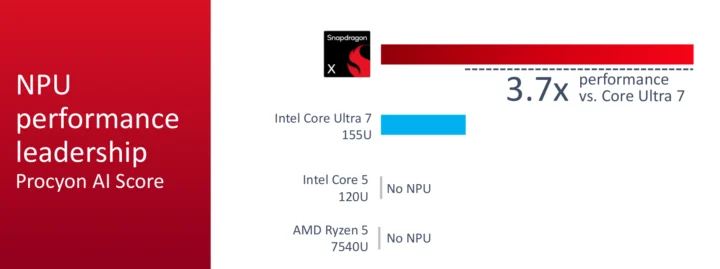



My wallet is opening. $200 is coming out. I am now the proud owner of a 12-core Snapdragon X Elite laptop.
Big fanfare for a slower version of an existing over priced processor.
“Only about 720,000 Qualcomm Snapdragon X laptops sold since launch — under 0.8% of the total number of PCs shipped in Q3, or less than 1 out of every 125 devices”
The press is slowly waking up to the gigantic failure of the Snapdragon X Elite. But its humiliation will only be complete when MediaTek and Nvidia come in with their own Arm Windows PCs and eat Qualcomm’s lunch.
720,000 in Q3 alone. It’s actually amazing result for something that new in such a competitive market. It’s over 10% of macbook sales as well.